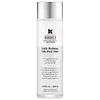What's inside
What's inside
 Key Ingredients
Key Ingredients

 Benefits
Benefits

 Concerns
Concerns

 Ingredients Side-by-side
Ingredients Side-by-side

Water
Skin ConditioningHamamelis Virginiana Water
AstringentDipropylene Glycol
HumectantBiosaccharide Gum-1
HumectantButylene Glycol
HumectantAcetyl Glucosamine
Skin ConditioningGlycerin
HumectantSucrose
HumectantSalicylic Acid
MaskingCaffeine
Skin ConditioningSodium Hyaluronate
HumectantPolysorbate 20
EmulsifyingTrehalose
HumectantCapryloyl Glycine
CleansingDisodium Phosphate
BufferingTrisodium EDTA
Benzoic Acid
MaskingPhenoxyethanol
PreservativeWater
Skin ConditioningHydrogenated Polydecene
EmollientCaprylic/Capric Triglyceride
MaskingSqualane
EmollientCarthamus Tinctorius Seed Oil
Masking1,2-Hexanediol
Skin ConditioningPEG-6 Caprylic/Capric Glycerides
EmulsifyingPEG-40 Glyceryl Cocoate
EmulsifyingPhenoxyethanol
PreservativeSodium Coceth Sulfate
CleansingCapryloyl Salicylic Acid
ExfoliatingTromethamine
BufferingEthylhexylglycerin
Skin ConditioningCitrus Nobilis Peel Oil
MaskingAdenosine
Skin ConditioningLimonene
PerfumingCaprylyl Glycol
EmollientAnthemis Nobilis Flower Oil
MaskingCupressus Sempervirens Leaf/Nut/Stem Oil
EmollientPrunus Amygdalus Dulcis Seed Extract
Skin ConditioningBenzyl Alcohol
PerfumingXanthan Gum
EmulsifyingSilybum Marianum Extract
Skin ConditioningTocopherol
AntioxidantDehydroacetic Acid
PreservativeLactic Acid
BufferingWater, Hydrogenated Polydecene, Caprylic/Capric Triglyceride, Squalane, Carthamus Tinctorius Seed Oil, 1,2-Hexanediol, PEG-6 Caprylic/Capric Glycerides, PEG-40 Glyceryl Cocoate, Phenoxyethanol, Sodium Coceth Sulfate, Capryloyl Salicylic Acid, Tromethamine, Ethylhexylglycerin, Citrus Nobilis Peel Oil, Adenosine, Limonene, Caprylyl Glycol, Anthemis Nobilis Flower Oil, Cupressus Sempervirens Leaf/Nut/Stem Oil, Prunus Amygdalus Dulcis Seed Extract, Benzyl Alcohol, Xanthan Gum, Silybum Marianum Extract, Tocopherol, Dehydroacetic Acid, Lactic Acid
 Reviews
Reviews

Alternatives
Ingredients Explained
These ingredients are found in both products.
Ingredients higher up in an ingredient list are typically present in a larger amount.
Phenoxyethanol is a preservative that has germicide, antimicrobial, and aromatic properties. Studies show that phenoxyethanol can prevent microbial growth. By itself, it has a scent that is similar to that of a rose.
It's often used in formulations along with Caprylyl Glycol to preserve the shelf life of products.
Water. It's the most common cosmetic ingredient of all. You'll usually see it at the top of ingredient lists, meaning that it makes up the largest part of the product.
So why is it so popular? Water most often acts as a solvent - this means that it helps dissolve other ingredients into the formulation.
You'll also recognize water as that liquid we all need to stay alive. If you see this, drink a glass of water. Stay hydrated!
Learn more about Water